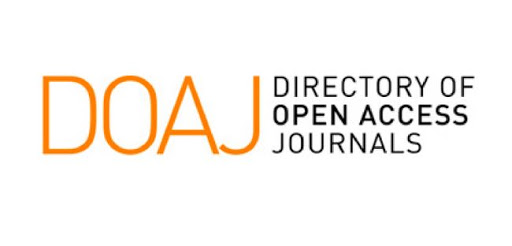Aim & Scopes
Sapporo Medical Journal aims to distribute and expand medical data to the World as well as build a supportive and vibrant community of researchers to connect and explore ideas by publishing articles related to all fields of medicine. Sapporo Medical Journal believes that quality and ethical research. The journal seeks to publish original research articles that are hypothetical and theoretical in its nature and that provide exploratory insights in the following fields but not limited to:
LATEST PUBLISHED PAPERS

Abstract : Abstract— Purpose: The aim of this study was to evaluate the bite force value between patients wearing PEEK frameworks fabricated by CAD-CAM in mandibular hybrid screw retained implant-supported prosthesis with all on four concepts. Materials and Methods: This study was a comparative clinical trial. It was conducted on six completely edentulous patients, according to the calculated sample size each patient received hybrid prostheses reinforced with PEEK framework. Biting force was assessed by a bite force transducer. All assessments were carried out three months after hybrid denture insertion as follows: - 1 week, 1 month, 3 months follow-up periods Results: The mean ±SD of bite force for peek group is 91.50±2.38 at 1 week ranging from 88.48 to 93.51, 88.43±4.37 at 1 month ranging from 80.22 to 92.4, 90.69±2.61 at 3 months ranging from 85.93 to 93.08. The repeated Measures test was used to assess change in bite force during follow-up from 1 week to 1 month to 3 months and demonstrates statistically non-significant difference between different follow up periods. Conclusion: Within the limitation of this study, the bite force value increases over time. The use of PEEK is very important in improving the bite force value and has proven highly effective in these cases

Abstract : The aim of this study was to evaluate the bite force value time through out between patients wearing Glass fiber reinforced composite resin frameworks fabricated by CAD-CAM in mandibular hybrid screw retained implant-supported prosthesis with all on four concept. Materials and Methods: This study was a comparative clinical trial. It was conducted on six completely edentulous patients according to the calculated sample size each patient received hybrid prostheses reinforced with Glass fiber reinforced composite resin framework. Biting force was assessed by a bite force transducer. All assessments were carried out nine months after hybrid denture insertion as follows: - 1 week, 1 month, 3 months, 6 months, 9 months follow-up periods Results: The mean ±SD of bite force for glass fiber is 82.25±9.18 at 1 week ranging from 68.75 to 91.67 , 88.49±6.31 at 1 month ranging from 76.14 to 92.06 , 90.59±3.95 at 3 months ranging from 83.04 to 93.85, 93.96±3.66 at 6 months ranging from 88.12 to 96.04 and 96.02±4.02 at 9 months ranging from 91.03 to 99.06. The repeated Measures ANOVA test was used to assess change in bite force during follow up from 1 week to 1 month to 3 months to 6 months to 9 months and demonstrates statistically significant difference between different follow up periods. Within the limitation of this study, the bite force value increases over time. The use of glass fiber is very important in improving the bite force value and has proven highly effective in these cases.

Abstract : Purpose: The objective was to compare abutment teeth surface roughness between two different Cobalt-Chromium removable partial denture framework processing be different techniques (casting 3D printed resin pattern and selective laser melting). Methods: twelve Cobalt-Chromium removable partial denture frameworks were constructed, divided into two equal groups, Group 1: 3D printed casted frameworks Group 2: selective laser melting frameworks. The abutment teeth surface roughness was estimated by using digital microscope with digital software before & after undergoing cyclic fatigue tests. Results: There was not a statistically significant difference in abutment teeth surface roughness behavior between the studded groups (3D printed RPD frameworks and SLM frameworks), but the difference became significant after the chewing simulation. Conclusions: both SLM and 3D casted cobalt chromium RPD frameworks provided acceptable abutment teeth surface roughness. Therefore, SLM-fabrication seems to be a viable alternative technology to fabricate cobalt chromium RPD frameworks.

Abstract : This in-vivo study compares the effects of two distinct attachment modalities on reduction in buccolingual bone width in patients with mandibular overdentures. The study population comprised completely edentulous individuals who received new complete maxillary and mandibular dentures. Two dental implants were installed in the canine regions of each mandible. Subjects were divided into two groups: Group I, utilizing Locator attachments, and Group II, employing Novaloc attachments, both fixated to the implants. Changes in bone buccolingual width around the implants were quantified radiographically using cone beam computed tomography (CBCT). Measurements were obtained at baseline, and at four, eight, and twelve months post-loading. Inferential statistical analysis using independent samples t-tests revealed no statistically significant difference between the Novaloc and Locator groups regarding reduction in buccolingual width at different times, except at the final time point (0-12 months) (p=0.028). The mean reduction in buccolingual width was higher in the Locator group than in the Novaloc group at all time points. The findings of this study suggest that the Novaloc attachment system demonstrates potential as a favorable option for implant-retained overdentures, exhibiting reduced buccolingual width reduction after a one-year follow-up period.

Abstract : Introduction: Drug-drug interactions (DDIs) present a significant challenge for patients, as concurrent medication use can lead to adverse effects. Early detection can mitigate these complications, and clinical pharmacists play a key role in providing guidance and facilitating communication with physicians. Objective: This study aimed to assess the prevalence of DDIs and evaluate the pharmacist's role in monitoring these interactions at Shar Hospital’s neurology department in Sulaimani, using free drug interaction checker mobile applications. Patients and Methods: A prospective observational and interventional study was conducted at Shar Teaching Hospital, Sulaimani, from Nov. 2021 to Feb. 2022. The observational phase assessed DDI incidence and types in patients admitted to the neurology ward. In the interventional phase, clinical pharmacists reviewed high-risk patients’ medications, identified potential interactions, and recommended interventions, such as dose adjustments, alternative medications, or additional monitoring. The impact of these interventions on reducing DDIs and improving outcomes was then evaluated. Results: The study found that 41.1% of patients used 3-5 drugs, while 37.4% used 6-10 drugs. Among the cases, 50.5% showed no interactions, 39.5% had minor interactions, and 3.7% had significant interactions. DDIs accounted for 49% of all interactions. Of the prescribed medications, 50.5% required no intervention, while 49.5% did, with 15.8% of these cases being






















